 The vulnerability of our natural ecosystems makes us more aware of the fragile state of our artistic ecosystems—and how profoundly interconnected these issues are.
The vulnerability of our natural ecosystems makes us more aware of the fragile state of our artistic ecosystems—and how profoundly interconnected these issues are.
What happens when a city known for its early-music scene becomes too expensive for musicians?
‘Can one person save the planet? No. But you can right your own individual actions that are ethical and point you in a certain direction.’
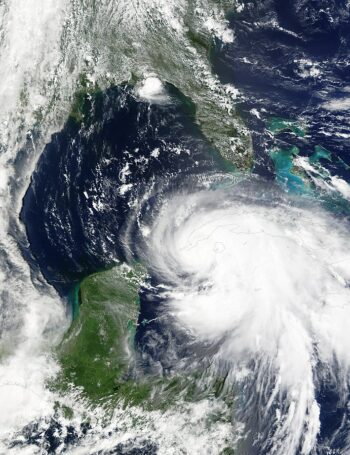
It’s the news of the day, every day. Devastating wild fires ravage the West on a seemingly annual basis. The “100-year floods” inundate the Midwest several times each generation. Extreme temperatures, droughts, devastating hurricanes, freakish “atmospheric rivers” in California, and increasingly violent storms, coupled with earlier-than-usual growing seasons—and perhaps most urgent of all, sea-level rise—have finally convinced even diehard global-warming deniers that the existential threat to the planet is real. And it might be coming sooner than our society—and our political will—can cope with.
Meanwhile, closer to home, ensembles and presenters have to contend with musicians being priced out of desirable cities—often those acclaimed for their early-music communities. In many cases, the response is to rely increasingly on visiting artists flying in for the gig, which in turn makes it even harder for local musicians to eke out a living. The process sets the local artistic community further off balance, all while being fueled by environmentally unsustainable practices.
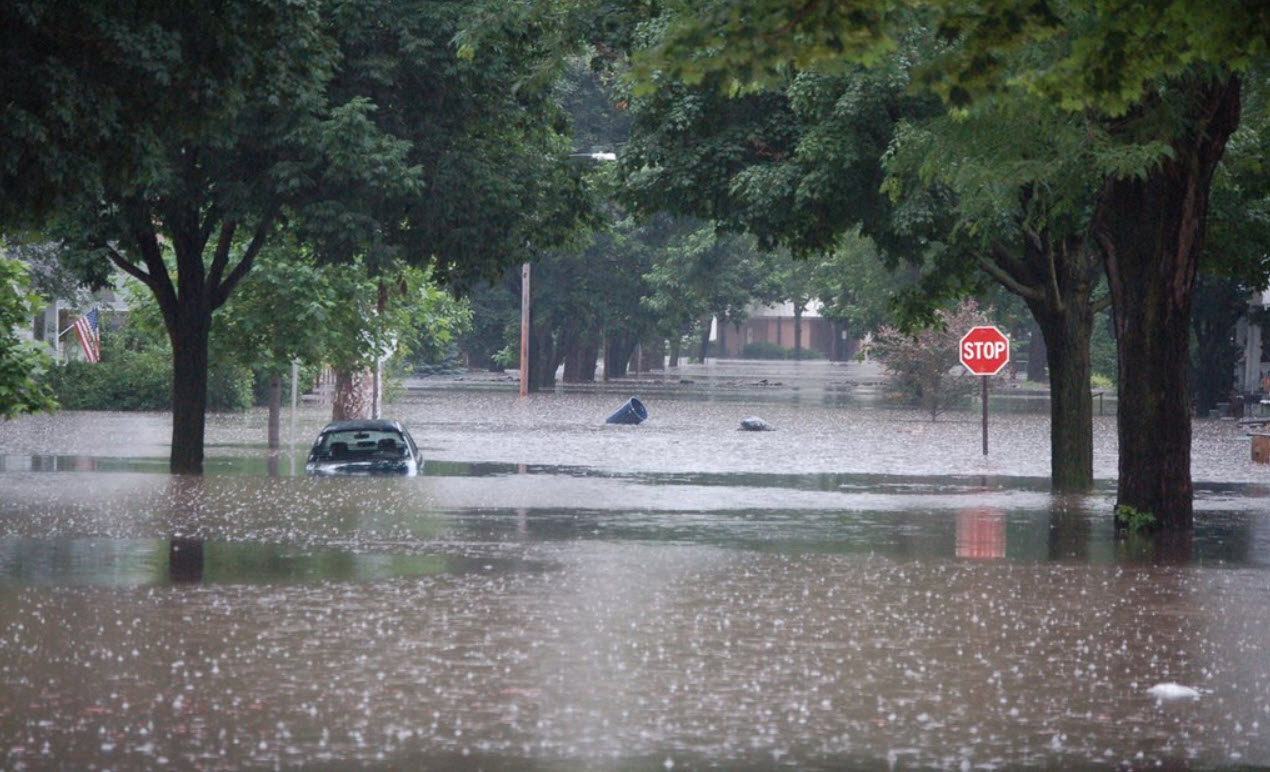
As we witness the harmful effects on our natural ecosystems, the resulting feelings of vulnerability may be making us more sensitive to the fragile state of our artistic ecosystems—and to how profoundly interconnected these issues are.
Bound together with artistic vision and health is the growing awareness that diversity and inclusion are essential to finding new audiences and fresh repertoire, corresponding to a larger sense of urgency to remedy the consequences of economic and social justice.
On the U.S. scene, many early musicians put together a living, in part, by crisscrossing the country for concerts. “In order to do that,” says one such musician, “there are very few ethical ways. Not many gigging musicians are talking about this, because it could affect our bottom line. But I have to imagine that there’s at least one person in North America who’s thought deeply about how we can be more sustainable in how we travel and who we hire.”
To untangle facets of this dilemma, I spoke with musicians around the country and asked about community, sustainability, travel, the climate crisis, and more.
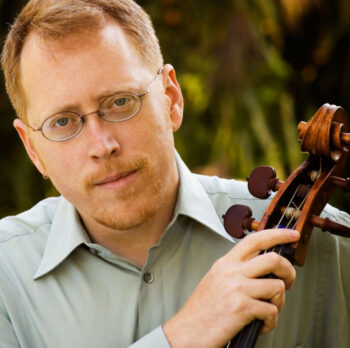
Baroque cellist and viola da gambist David Morris, based in the Bay Area, is one musician who’s thinking, and acting. “A few years ago, colleagues of mine were talking about peak oil, and we were wondering: How long can this last?”
“I’m watching these weather events that we see every year and thinking, ‘To what extent am I contributing to this?” Morris continues. “Does this make me feel good about how I’m earning a living? Music shouldn’t cost anything, but it does.”
Although he needs to travel widely for performances and related activities, Morris doesn’t own a car. He admits it’s often a major inconvenience. He even turned down a university job when he realized it was impossible without viable transportation—in almost every American city, that means by car. “I thought it’s just not worth it,” he says.
Morris still flies to the East Coast for gigs. He’ll try to maximize his time there, often staying with friends to avoid cross-country flights during gaps between shows. “I’m not going to be flitting back and forth,” he says. To that end, Morris announced he’ll stop extensive touring with his group Quicksilver. As violinist and Quicksilver artistic director Julie Andrijeski explains, “David has talked about how important it is to acknowledge that even little things to reduce your carbon footprint while traveling can be at least psychologically satisfying.”
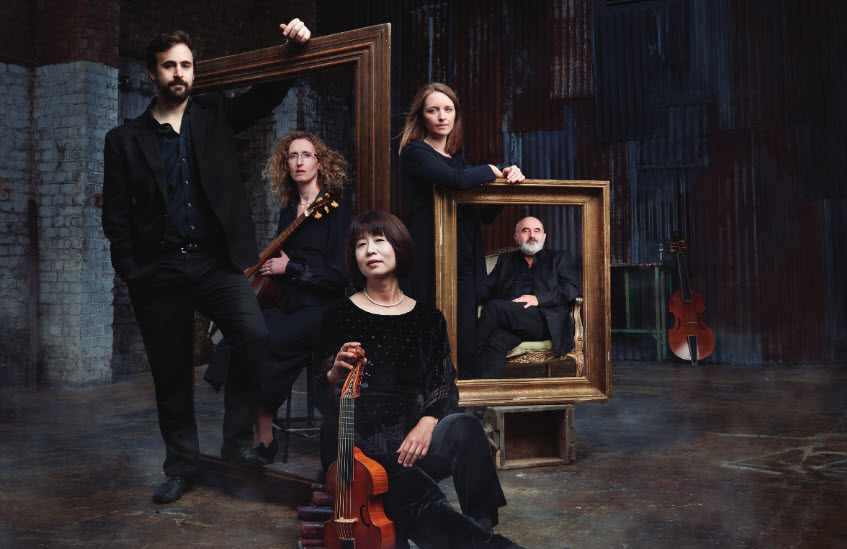
In Europe, musicians don’t face the same travel hurdles. Fretwork, a British viol consort, has committed to a no-fly travel policy. Although isolationist Brexit policies in the U.K. and the COVID pandemic have put its musicians under new disruptions and financial stress, the ensemble has made a pledge: “Fretwork will travel by electric car and train on the continent, in a bid to lower our carbon footprint and in acknowledgment of the changes that the music business needs to make in the face of the climate and ecological crisis.”
The sustainability statement on the group’s website, worth quoting at length, continues, “It’s time for everyone in classical music to reassess what we’re trying to achieve. What does a successful tour look like, and how do we weigh up the financial, environmental, social, and emotional costs and benefits of our work? We cannot keep our heads in the sand and pretend that business as usual can continue when every day the news brings stories of suffering caused by climate breakdown, and while [climate experts] issue stronger and stronger warnings about the likelihood of us experiencing irreversible and catastrophic global heating.”
Early-music repertoire is haunted by issues of inequality and exploitation dating from the age of European empire and colonialism. The current climate crisis echoes that injustice. Fretwork acknowledges that “failure to meet those targets will have a direct impact not only on future generations but also on people, mostly in the global south, who are at the front line of climate breakdown today.”
“People are suffering now,” the statement concludes, “and it can’t be right that success in the music business is built on that suffering.”
Early-music repertoire is haunted by issues of inequality and exploitation dating from the age of European empire and colonialism. The current climate crisis echoes that injustice.
In the U.S., along a densely populated corridor on the East Coast, it’s possible to travel by train, albeit one that is typically diesel-powered, slow moving, and prone to delays. Pessimistically, or realistically, we’ll not see improved city-to-city transportation in our lifetimes. Perhaps a capitalist work-around is more plausible, involving solutions like carbon-offset credits: If an ensemble in, say, Dallas flies in musicians from afar, that organization devotes resources to heal the environment in comparable measure, such as partnering with companies specializing in reforestation, habitat rehabilitation, carbon capture and storage, renewable energy projects, and so on. It will likely mean additional fundraising based on a formula involving the number of musicians, their travel distance, and the pollution and environmental degradation generated by the trip—and that’s not counting, of course, the plane ticket itself. And the costs go up if your soloist’s cello has its own seat. What are the alternatives?
Building Community in Seattle
“Sometimes it’s helpful to just say things out loud,” observes Baroque violinist Tekla Cunningham, who has for decades been a shaping force for the early-music scene in Seattle and the Puget Sound region. Far-flung travel is a reality in early music, especially if you play a rare instrument or are at the very top of your discipline. But nurturing a thriving local community is perhaps the most straight forward solution to mitigating the climate crisis.
“It’s important to think about what you can develop with what you have where you are,” she adds. “What beautiful pot of clay can you make with the local soil? And when you choose to bring something in, will it add something special? What is a responsible allocation of all of these resources?”
Seattle’s regional ecosystem and the early-music scene in this corner of the USA mirrors important aspects of its more-established counterparts in the Bay Area and, to a lesser extent, in Boston—both in its historical unfolding and in the adversities arising from rapid increases in the cost of living.
“In Germany,” Cunningham says, “you have the concept of soziales Denken, it’s a thing—the idea of social responsibility and not being shackled to individualism—and it’s amusing, and sad, at how that’s not a thing in the U.S.”
Cunningham says she’s inspired by the model of Patricia Kopatchinksaja, a celebrated modern and historical violinist. “She’s asking: What are my choices? She takes the train, she has only one kid, she organizes her tour schedule to limit the number of flights. I don’t think she’s doing it from a place of shaming other people for their choices, but instead to say ‘Hey, I’m making choices and I’m going to be vocal about it.’ I think it’s interesting to have artistic leaders speak on this topic.”
Cunningham cites the American environmentalist Paul Hawken’s book Regeneration: Ending the Climate Crisis in One Generation. “He talks about principles: Does the action create more life or reduce it? Does it heal the future or steal the future? Enhance human wellbeing or diminish it? Prevent disease or profit from it? Create livelihoods or eliminate them? Restore land or degrade it? Increase global warming or decrease it? Does it serve human needs or manufacture human wants? Is it reducing poverty or expanding it? Does it promote fundamental human rights or deny them? Does it provide workers with dignity or demean them—in short, is the activity extractive or regenerative?
“[Hawken] makes you realize there are everyday choices we make and actions we take,” Cunningham continues. “Are you generally steering towards regenerative or extractive? Can this one person save the planet? No. But you can right your own individual actions that are ethical and point you in a certain direction.”
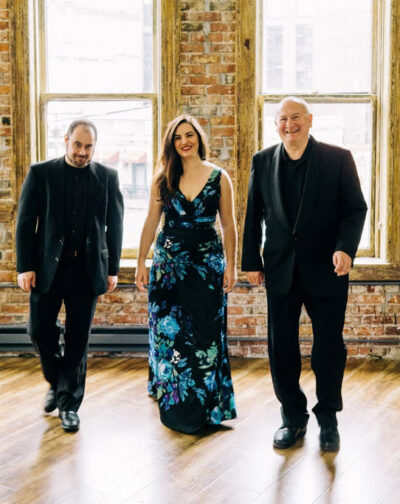
One of Seattle’s exemplary early-music institutions is Pacific MusicWorks (PMW), of which Cunningham is co-artistic director and concertmaster. Lutenist and conductor Stephen Stubbs founded PMW in 2008 as a production company focusing on vocal and operatic work of the 17th and 18th centuries, but he also commissions contemporary artists.
When he relocated to his native Seattle from Germany, where he had built his career in its first decades, Stubbs made it a priority to transplant the educational model he had set up in Europe and established the Seattle Academy for Baroque Opera. “It’s based on the idea that if you want to do 17th-century opera, you need to cultivate the skills of both the continuo player and the singers,” Stubbs says. “So we set the educational footprint down first, even before the professional one. I think that a healthy ecosystem needs to have an educational aspect that cultivates the next generation. And educational efforts have been important for cultivating the local population of artists.”
Stubbs seeks to balance a local community of musicians with an international roster of stars and specialists. “I’ve tried over the years to be strategic about bringing in artists from outside who will be inspirational to the local population—and also artists you simply can’t get in Seattle, who are simply not part of the talent pool,” he says about his vision for PMW. The plan is to “set international standards while bringing along the local community as well.”
“In every way, we see ourselves as a Seattle organization,” Stubbs asserts, “but the talent pool of people doing things at a high level in the field that I’m interested in is spread up and down the West Coast. If you look at Vancouver to San Diego as one large talent pool to call on, you could compare it to anything that could be brought together in New York or Paris or any other major center—even if no individual city along the coast could claim that, with the exception, perhaps, of the Bay Area.”
Stubbs continues, “We have quite consciously tried to cultivate musicians up and down the coast, but that may not be as eco-friendly as you’d like. It still requires some either car driving or plane flying to get from place to place. But at least it doesn’t mean international travel or travel from East Coast to West Coast, which is a larger footprint.”
Elsewhere, some early-music ecosystems with well-rooted institutions seem to have the promise to grow bigger yet still sustainable local scenes. Chicago’s Haymarket Opera Company, founded in 2010, focuses on historically informed productions of opera and oratorio. “Direct support of Chicago-based artists has been a cornerstone of Haymarket since it was started,” says Haymarket general director Chase Hopkins. Like Stubbs in Seattle, Hopkins believes that finding the proper equilibrium between local and guest artists doesn’t have to be a zero-sum game.
Haymarket’s production of Handel’s Orlando is a case in point. Filmed and presented online during the pandemic, Orlando starred visiting countertenor Bejun Mehta in the title role. “As companies, we have to play with how to reengage with our audience each time,” says Hopkins. “There are so many variables to ensuring each project is special and to making the audience desire to come. Having someone of the international stature of Mehta sing alongside a cast of Chicago- and Midwest-based artists turned out to be mutually exciting.” Hopkins believes that the risk of stagnation—the real bête noir for audiences—is overcome by the cachet of visiting star performers who develop a rapport with the local ensemble.
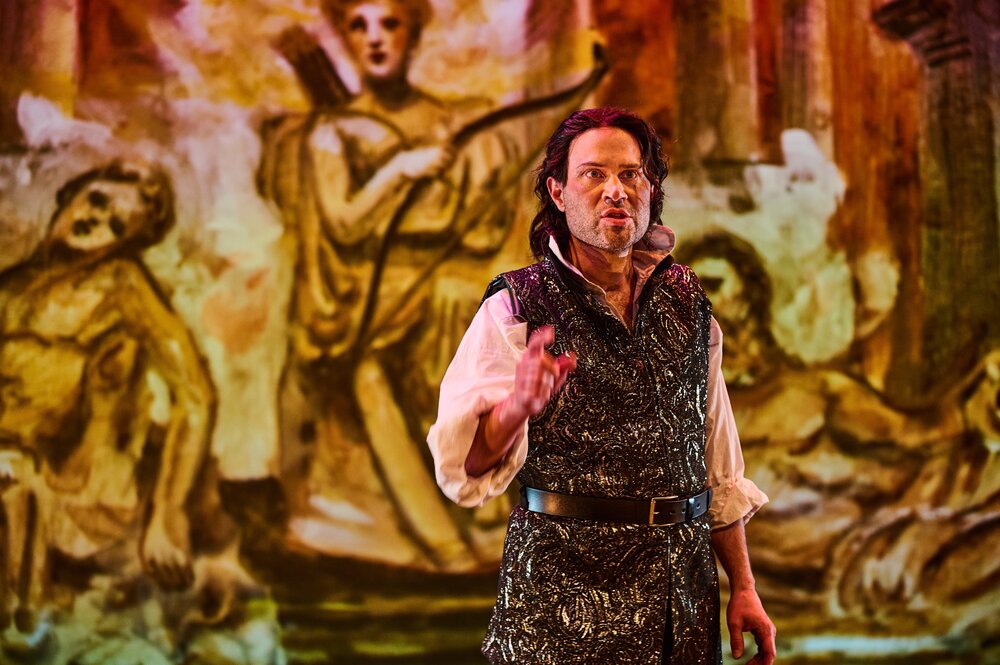
This all ties in with Haymarket’s ideals on climate-change mitigation. “These are principles that inform our business decisions. We definitely try to imagine being ecologically conscious. It’s even at our board level—we have several people whose main profession was ecological restoration.” The company is mindful of the details, such as the type of paper they print on. “Truthfully,” Hopkins admits, “it’s hard to commit to some of these initiatives.”
Sea Change in the Bay Area
An abundance of high-level professional musicians sets the Bay Area apart. And that’s just one component of its rich ecosystem, according to conductor and keyboardist Derek Tam, the artistic director of the Berkeley Festival and Exhibition and executive director of the San Francisco Early Music Society. (Disclosure: Tam is also EMA’s current board president.)
“It’s perhaps equally important to include the needs and wants of audience members and of people who are actively participating in early music as community musicians and lifelong learners,” Tam says. “What has made the Bay Area successful is that there are a lot of amateur players who take lessons and attend monthly sessions and larger workshops.”
But for all these synergies, the Bay Area’s early-music ecosystem has been contending with unrelenting stresses on its health. The exorbitant cost of living is only the most obvious of these; its effects reinforce a tangle of related Bay Area challenges that frequently get mentioned in discussions with musicians across the entire field.
Foremost among these is the practice of importing performers for a single program, which redirects locally raised resources to people who don’t live in the community. This can also result in fraught relationships between veteran musicians and young artists just starting to establish their careers—a tension that in turn complicates strategies for audience development.
Decisions about these issues can reflect conflicting interpretations of mission coming from the artistic director, the board, and even the personnel manager.
Sometimes the core members of a longstanding ensemble operate from an aesthetic outlook imprinted by a previous generation, one that’s perceived by new leadership to be outdated.
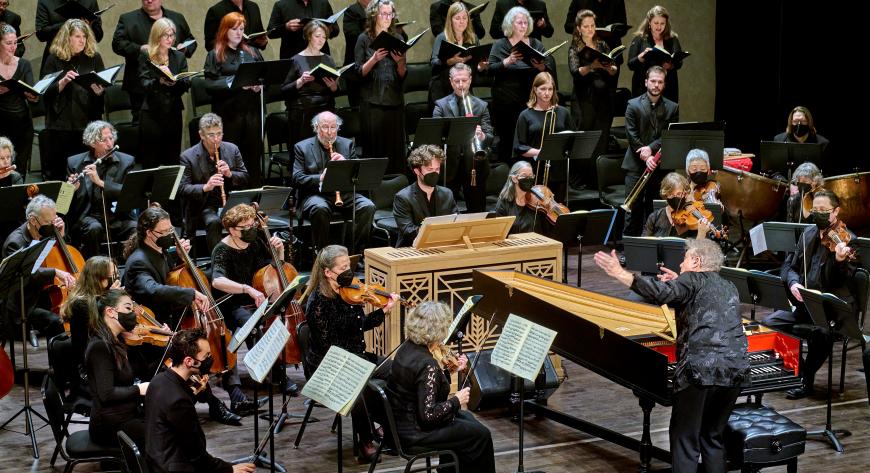
Indeed, a sea change seems to be under way with regard to the shared values that initially made the Bay Area an epicenter for early-music enthusiasm. “The past has never been particularly sexy in Los Angeles, unless it’s directly related to the film industry, whereas antiquarian things have always had an attractive quality in the Bay Area,” says the car-avoiding cellist and gambist Morris, who grew up in Southern California.
But, according to this longtime participant in the Bay Area scene, “the founding generation is slipping away—and subsequent generations don’t seem to be tipped in that direction to the same degree. So the challenge now becomes: How do we keep that going?”
One of the most rewarding and yet contentious issues in the Bay Area’s ecosystem revolves around the exchange program between the nation’s largest period-instrument ensemble, the Philharmonia Baroque Orchestra & Chorale (PBO) and—2,500 miles away—the Juilliard School’s Historical Performance program in New York City. Some longtime observers characterize the young Juilliard graduates who have taken over principal PBO positions as “interlopers” uninvested in growing local roots because they often commute from other cities—still another consequence of the forbiddingly high cost of living in the San Francisco region.
But many see the connection with Juilliard as a highly successful process of cultivating a relationship between different generations and exposing emerging artists to prized traditions in the Bay Area that are increasingly at risk.
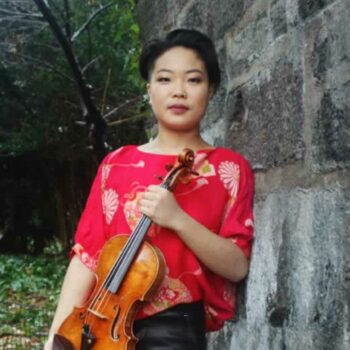
Manami Mizumoto is a recent graduate from the Juilliard program who is completing her first season as a PBO violinist. When she relocated from New York to the West Coast, she opted to make more-affordable Portland her home base. But even without living in the community, Mizumoto says she feels influenced by traditions distinctive to PBO.
“I actually don’t think it’s possible to not be affected by it,” she observes. “When you’re the new person in an established community and you start rehearsing together, you start absorbing that for yourself and realizing how to work within that shared language and way of thinking.”
Mizumoto adds: “I feel welcomed by PBO. A lot of what gets exchanged comes just from observing how people who have played together for so long, in such an established group—how they deal with a difficult moment in rehearsal. You start to develop a language that doesn’t need so much talking. Everyone understands each other on a different level. That’s something I admire and would love to integrate into.”
The Juilliard Pipeline
Indeed, Juilliard’s Historical Performance program, since it launched in 2009, has established a formidable presence across America’s early-music scene. “Simply the fact of having such a strong early-music department at a school as prestigious as Juilliard has been a force for the good. It has changed the landscape in America,” according to Stubbs, who has collaborated with Juilliard’s HP program on several productions.
“It’s caused a big change in the ecosystem of New York in particular, but that bubbles over to the rest of the country because suddenly there’s this pipeline of young, very well-developed players with skills that you’d like to have in your local Baroque orchestra,” he explains. “But that can make for discomfort for the older players who have been there for a long time.”
Juilliard’s HP program is directed by Robert Mealy, a Baroque violinist who came of age in the Berkeley scene and is well-positioned to observe the rapidly shifting forces shaping early-music ecosystems. “I always encourage our [Juilliard] grads to think about making a musical home somewhere else and inventing a scene,” Mealy says. “One of the biggest problems they face is the vanishing prospect of being able to make a living wage by being committed to a single ensemble. In America we have to become musical nomads. These issues of local versus imported musicians would be much less charged if we simply had more work all around. Historic performance practice is in a scarcity economy, as with so many other scenes these days. There simply aren’t very many large employers. How many new Baroque orchestras have emerged since the 1990s?”
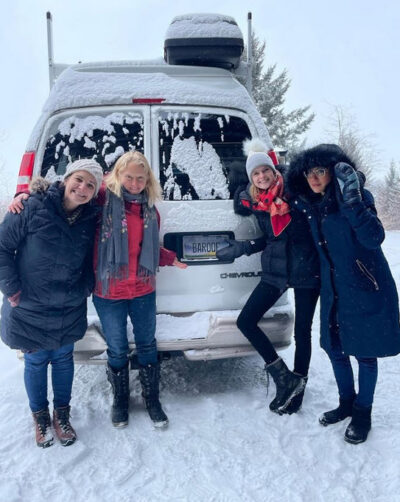
One promising development is the creation of new ecosystems in places where they simply did not exist before and may even seem unlikely, such as ensembles in Wyoming and Montana. Pioneering musicians like Baroque violinist Carrie Krause are inventing a scene. Performing around the state in intimate and even unusual settings, Krause’s Baroque Music Montana is an umbrella organization that has established a small but sustainable financial model.
In the Southeast, a hunger for music on period instruments inspired cellist Barbara Krumdieck in 2011 to co-found the North Carolina Baroque Orchestra (NCBO) with her sister, the recorder virtuoso and conductor Frances Blaker. Based in Davidson in the Raleigh-Durham region, the NCBO arose, says Krumdieck, “to provide opportunities for people in these communities to play historically informed music.”
Part of NCBO’s mission is to foster a sense of belonging—an antidote to the jet-setterism afflicting other early-music ecosystems that Krumdieck, an emigrée from the Bay Area, knew all too well.
Although it’s necessary to round out the ensemble with instrumentalists from elsewhere in the Carolinas and the D.C. area, Krumdieck points out that loyalty to the core players is an essential value: “We think of the orchestra as a family that has its own identity and with an atmosphere of mutual support. There’s a beauty in creating your own sound with a nucleus of people. We’ve even had a few players choose to relocate from other areas of the country because they’re provided with enough musical meat here.”
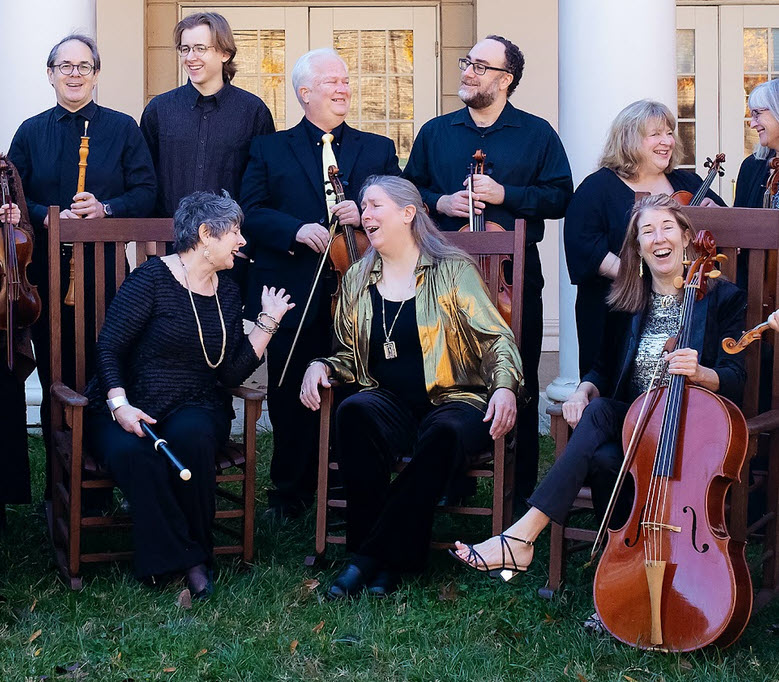
In this together
Henry Lebedinsky, a Seattle-based historical keyboardist, composer, conductor, and presenter has been active in early-music scenes across the country—including the NCBO—and is outspoken in his views of what’s going wrong and how to attempt a remedy.
“Inertia”—Lebedinsky’s term for being stuck in predictable patterns—can be fatal to a once-flourishing artistic ecosystem. The problem of aging musicians is compounded by what he calls entrenched “ghost worship”—the fixation by older audiences on storied early-music figures who once defined a particular scene: “There’s so much driving while looking in the rearview mirror. It comes down to refusing to admit the fact that the younger generation experiences, or wants to experience, music in new ways that are different.”
Based in Seattle, Lebedinsky is co-artistic director of PMW with Tekla Cunningham and he also performs with the Bay Area ensemble Agave. When he joined PMW, Stubbs recalls, “he added an entirely new dimension to my thinking because he was very firmly attached to the idea of bringing music to places where young people like to go—bars and wineries and so on—and not just doing things in concert halls.”
‘The goals of social justice, economic justice, and climate justice intersect, but they can conflict in the short term.’
Lebedinsky is especially devoted to exploring innovative ways to amplify voices from historically excluded populations and including them in the music-making process. The goals of social justice, economic justice, and climate justice intersect, he observes, but they can conflict in the short term. Because it’s become so expensive and because of its lack of diversity, Seattle has excluded “the very people we want to bring into the artistic community”—to the point that making sure musicians of color are represented requires, at least for the time being, inviting outside artists to perform.
His goal in Seattle is to build “a truly local ecosystem. That doesn’t just mean getting by with what we have, but actively creating a scene where [HP musicians] want to settle here and work. We are a beautiful destination, with the outdoors and the weather, and we have the potential to build a healthy audience base in the face of deterioration from natural aging and the pandemic.”
But a major obstacle remains inertia, as “organizations close their wagons around their aging donor base. What we were seeing in the pandemic is only accelerating: a complete gutting of what used to be called the ‘fringe’ scene.”
Lebedinsky continues, “if we’re going to try to accomplish social justice, we have to fight against the realities of economic and climate justice, because we have to bring people in from the outside, because they neither can nor want to live in such a racially homogeneous place. I think what we must do—and this is something that people need to hear—is that the corporate world has the power to deliver seed money to organizations. The mission is like the ‘new urbanism’ idea of walkable neighborhoods, to have the musicians here. People live where they can afford it.”
As Cunningham points out, finding the balance between community and environment might require a change in mindset. “It’s about jet-setterism vs. working with locally based musicians, and how that impacts both the planet and the community here,” she says.
Do we need to return to the anti-establishment attitudes that helped early music prosper during the heyday of the Bay Area’s counterculture revolution? Will that spirit help finally provoke a response? “I don’t believe in simple answers,” counters Lebedinsky. “But if we’re going to be relevant moving forward, we need to answer the question: Why are we coming together in experience this music?”
Thomas May is a writer, critic, educator, and translator. He is the English-language editor for he Lucerne Festival and contributes to the New York Times, Seattle Times, Musical America, and other publications. He blogs about the arts at memeteria.com.

